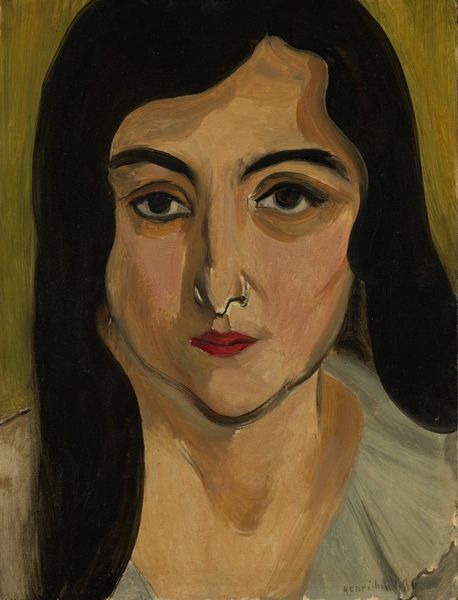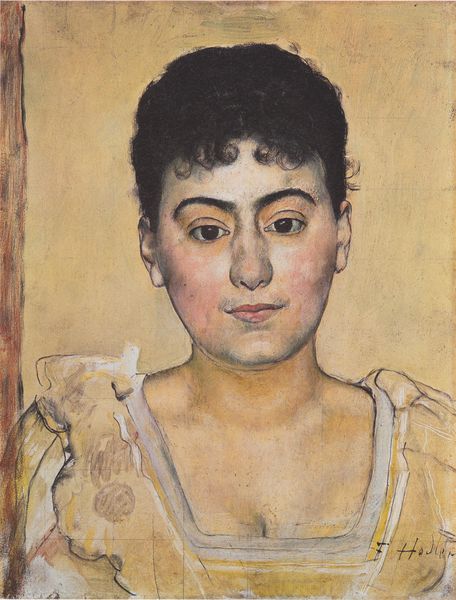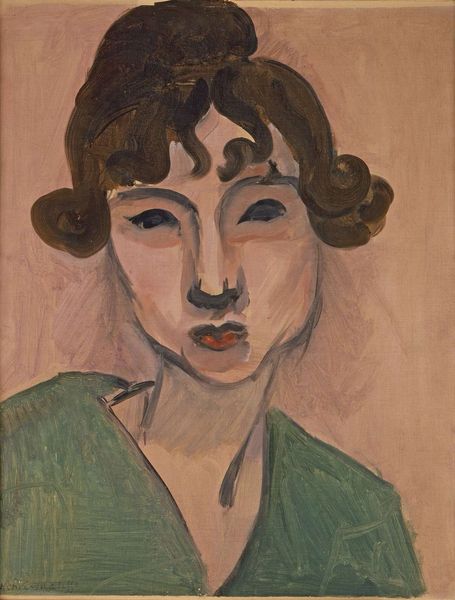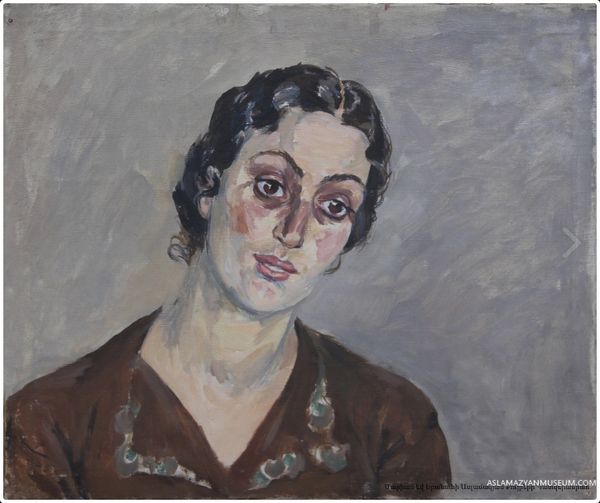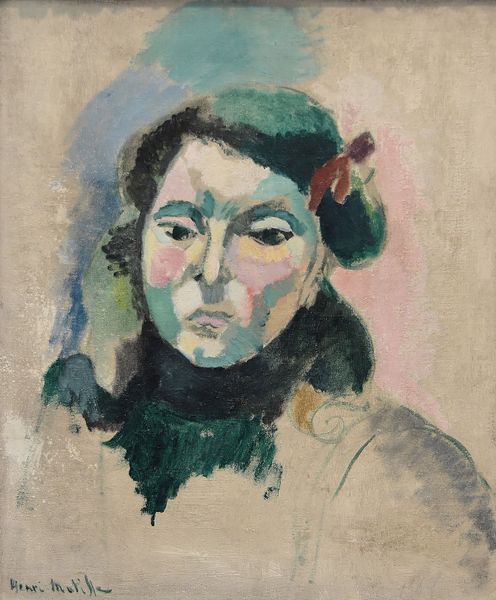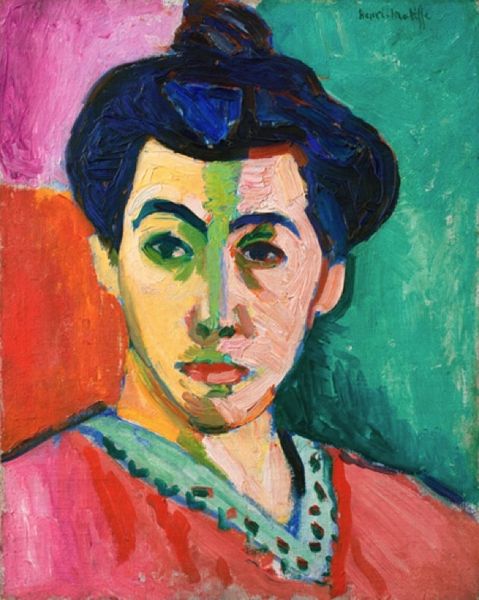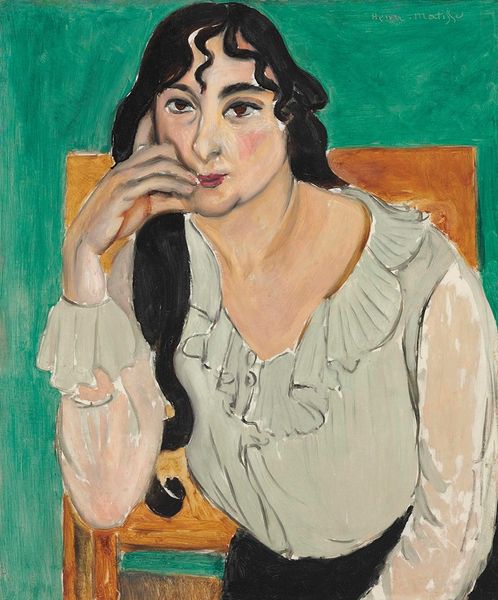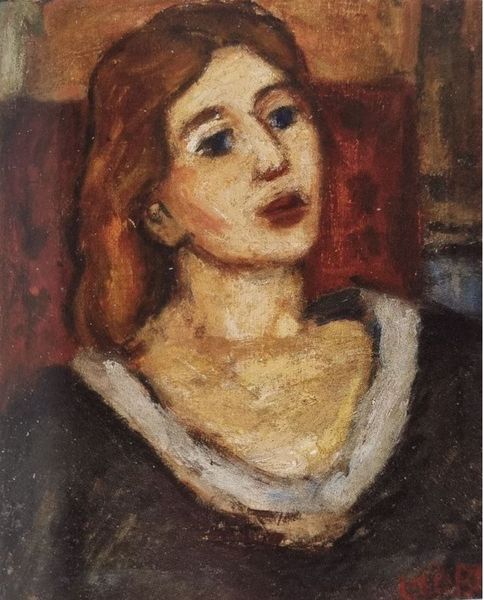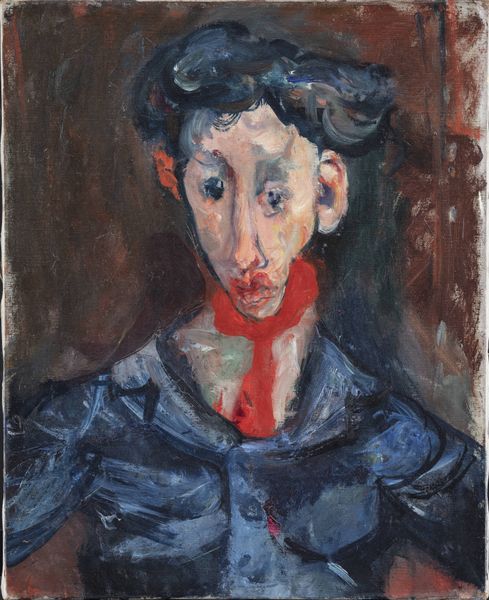
painting, oil-paint
#
portrait
#
head
#
face
#
painting
#
oil-paint
#
expressionism
#
portrait drawing
#
portrait art
#
modernism
Copyright: Public domain US
Editor: Here we have Henri Matisse’s “Marguerite with Black Velvet Ribbon,” painted in 1916. The impasto, and almost starkness of the portrait, strike me. What's your read on this piece? Curator: Considering its socio-political context, 1916 was a brutal period during the First World War. Do you notice anything about how Matisse seems to confront the viewer directly, almost aggressively, eschewing the decorative aspects he was previously known for? It moves away from the ornamental. Editor: Yes, I see that now! The gaze is so direct and unflinching. But, why do you think that is? Was there some intent from Matisse? Curator: Well, think about the art world then. There was growing disillusionment and anxiety permeating society as a whole. Perhaps Matisse reflected this, using his daughter’s portrait as a canvas to express these turbulent times through more psychological intensity. Even the black ribbon becomes almost severe. It's almost a social commentary disguised as a personal portrait. Editor: That makes sense! So, the apparent simplicity and lack of adornment, it's not really simple at all. It’s charged with meaning, responding to, and even critiquing the social climate. Curator: Precisely. Understanding art as a mirror, or even a participant, in the political landscape of its time can reveal unexpected layers. It invites us to reconsider preconceived notions about modernism. Editor: Wow, I will certainly never look at a Matisse the same way again! Thanks for sharing this context. Curator: And I’m reminded how powerfully artists use portraiture to comment on historical moments.
Comments
No comments
Be the first to comment and join the conversation on the ultimate creative platform.
